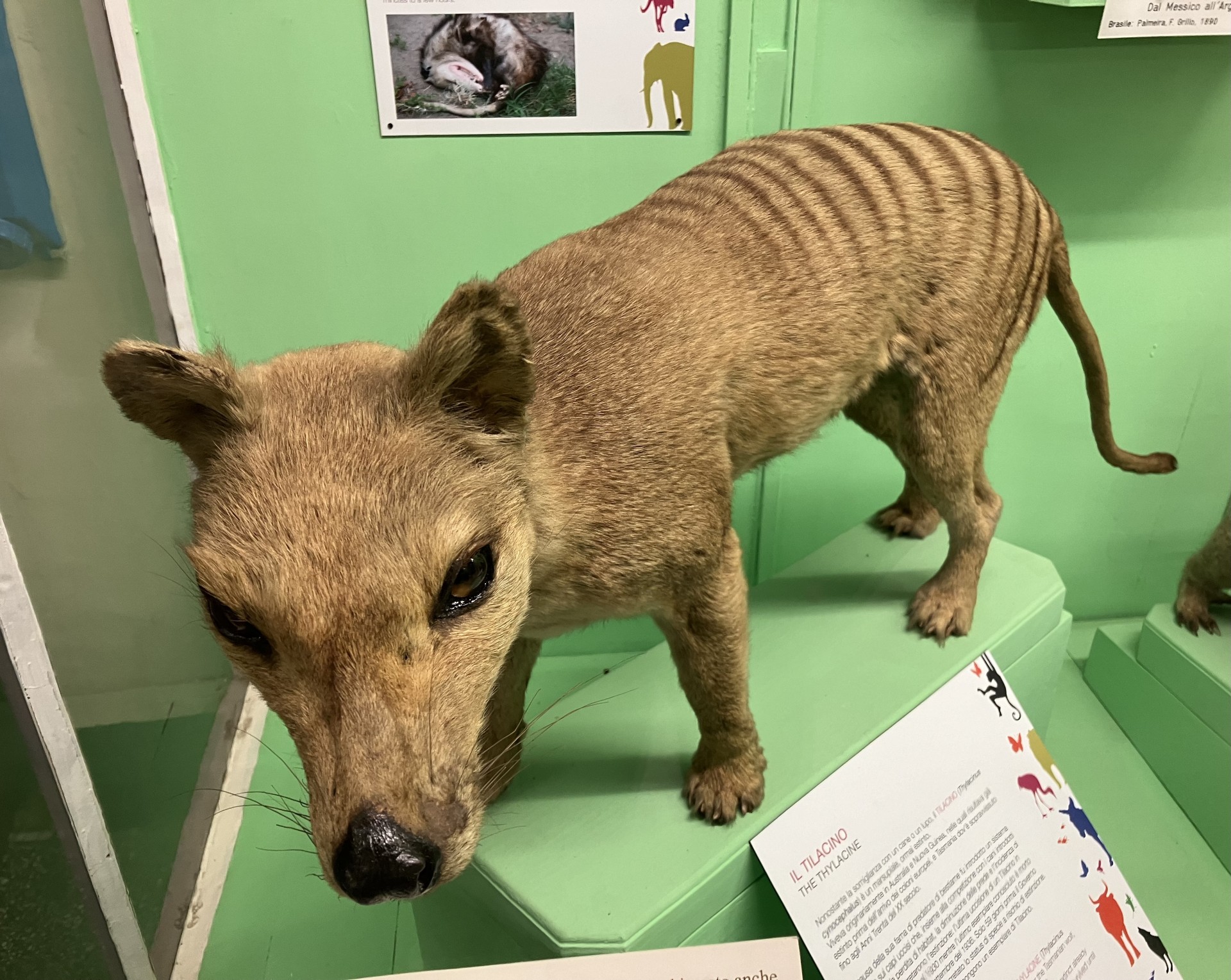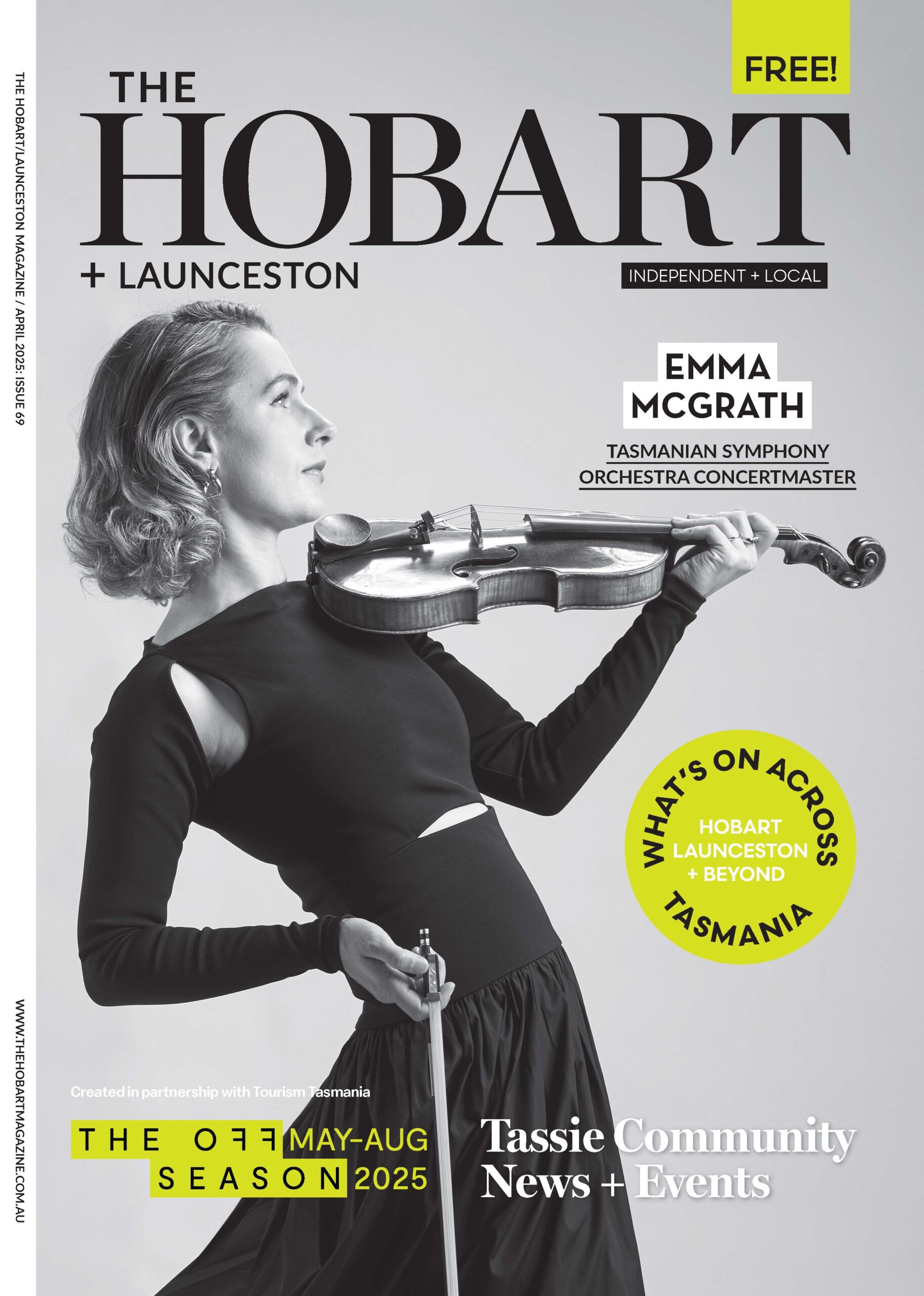A Tasmanian Abroad
by Amanda Double

We travel largely to enjoy new experiences, to delight in different cultures and learn new ways of being and doing. But we also take pleasure in revisiting favourite haunts. Likewise, it can be fascinating to encounter something we know very well, but in a different environment – to unexpectedly come across something Tasmanian or from wider Australia while overseas.
I felt proud this way when I saw a Portuguese-language edition of Richard Flanagan’s Gould’s Book of Fish on the “Recent Returns” shelf of a Lisbon library a few years back, and a new Frenchlanguage edition of The Narrow Road to the Deep North in a French bookshop after he won the Booker Prize.
On a recent visit to the Giacomo Doria Natural History Museum in Genoa, Italy, I was intrigued to discover a Tasmanian tiger specimen (Thylacine, or “il Tilacino” in Italian) in pride of place in their mammals and marsupials exhibition. This museum, the oldest in the city, was founded in 1867, and the Thylacine specimen was donated to it by E. Dohrn way back in 1883. According to the Museum, it is one of only 80 taxidermied specimens in the world (three of which are apparently in Italy). However, in this case, any feelings of Tasmanian pride were swiftly replaced by a poignant sadness as I gazed at this extinct creature so far from its former natural habitat. Historian Cassandra Pybus has revealed the full extent of the secret trade in the nineteenth century to European museums and private collectors, not just of exotic Tasmanian animal and plant specimens, but disturbingly also of Indigenous human remains, in her newly-published book A Very Secret Trade: The dark story of gentlemen collectors in Tasmania (Allen & Unwin, 2024).
Interestingly, the Tasmanian Museum & Art Gallery has reported in a recent newsletter that among its own collection of Thylacine remains is what has only recently been revealed to be the REAL last-known specimen – and it is not the Beaumaris Zoo animal long previously identified as the last Thylacine in photographs and film! Researchers Robert Paddle (from the Australian Catholic University) and Kathryn Medlock (Honorary Curator of Vertebrate Zoology at TMAG) reveal in a paper soon to be published in Australian Zoologist that an old female Thylacine captured in the Florentine Valley was sold secretly to the Zoo in May 1936 but its body was transferred to TMAG following its death a few months later. Somehow the specimen was eventually forgotten about and unidentified, until a review of the collections was undertaken.
I had a happier Australiana travel encounter in Monaco when encountering a species also once presumed to be extinct but in this case newly re-discovered: the Australian Wollemi Pine tree (Wollemia nobilis). I came across not just one but two of these trees flourishing in separate parks there, as part of Monaco’s “commitment against deforestation” in the principality and internationally. The Wollemi Pine, one of the rarest species in the world despite apparently being around since the Jurassic Period, was only re-discovered in Australia in 1994 by a national park field officer in remote sandstone gorges north-west of Sydney. According to the New South Wales National Parks and Wildlife Service website, “only 46 adult trees and 43 juveniles remain in the wild”, so this ancient conifer is critically endangered and has since been carefully cultivated in gardens around Australia and overseas. The specimens in Monaco were a gift from the Wollemi Pine International Australia Association, and were planted by His Serene Highness Prince Albert II of Monaco in 2006. Other Australian trees also appear there – for example, the Moreton Bay fig and the Native frangipani. I experienced a little thrill of recognition each time I spotted one. We are fortunate to have several Wollemi Pines growing in the Royal Tasmanian Botanical Gardens in Hobart, located near the Anniversary Arch: the oldest still living specimen (sourced commercially) was planted in 2011, according to the RTBG, with further donated specimens planted here from 2013 to 2018.
I think travel can also make us more interested in what’s happening in our own backyard. English author Terry Pratchett once commented: “Why do you go away? So that you can come back. So that you can see the place you came from with new eyes and extra colours…”
When I’m travelling abroad, the first thing I do when I meet the locals is to tell them I’m Australian – and specifically, Tasmanian. This always elicits a great response – chiefly surprise and appreciation that I’ve come so far to enjoy their region. They always tell me if they know of someone with a friend or family member who is currently in Australia, like the baker whose stepson was visiting Sydney and loving it. “Just like I’m loving being in France,” I told him. “And this is exactly why we travel,” he replied, beaming. I treasure these spontaneous moments of warm connection with total strangers, and the way special people and places become part of us forever.
American poet Wallace Stevens has expressed well the delights of looking around us with fresh eyes, at home AND abroad: “The most beautiful thing in the world is, of course, the world itself.”

